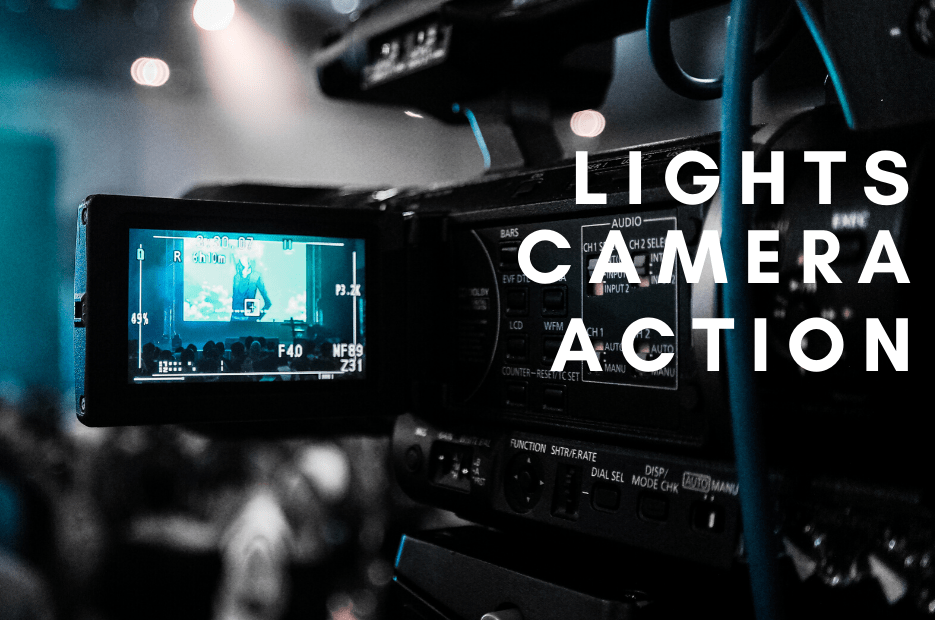Promotional opportunities for virtual events and how to maximise their impact
As more and more events are being cancelled around the world, perhaps it is no wonder that businesses are turning to creating video assets.
Live-streaming a panel from an office or a remote location (i.e. speaker homes), sharing a product demonstration with a few best use tips and hosting a virtual Q&A can really elevate your brand in the eyes of your customers.
Either pre-recorded or live-streamed, virtual events give your audience the flexibility to experience your brand and products from anywhere.
For best results, you need to make the most of marketing opportunities for your virtual event. Once you have decided on the format of your virtual event, (for ideas read How to shift from physical to virtual events blog here) the marketing activity can commence.

Opportunities to promote and communicate information about your virtual event are really immense and here are just a few ideas on how to maximise these.
Virtual Event Launch
Just like a physical event, a virtual event will have a date, time and location, therefore making announcements such as the ‘save the date’ messages will give your event some great exposure from day one. Create a hashtag and/or a special code from day one, this will let you measure the impact of your communications.
Once you have figured out the target audience, the format of your virtual event, what value it will deliver and how, you can produce a press release, a blog post, a series of social media posts, and email your database.
You can push for pre-registrations, to build a mailing list, or if you have set up and confirmed everything already, then offer Register or Book Now buttons. Gathering information such as name, email and what they are hoping to get out from the event will help you tailor the communications going forward.
Day-to-day activities in the lead up to the virtual event
Next sequence of communication activity will entail publication of further details about the event. This provides a vast opportunity for email campaigns, social media posts and blog articles on a regular basis over a period of several weeks.
This is the time to talk about the topics/questions/problems that will be covered during the event. This is also the time to involve your audience and get their input to really tail the programme (if not already confirmed of course) to what will benefit them the most.
For bigger virtual events, talk about the speakers that will be presenting, any sponsors or exhibitors. Think about the speakers you will use, what could they be talking about and building an audience with?
Be sure to emphasis the event hashtags and any special codes each time.
Last call of activities prior to your virtual event
Even with only a few weeks to go to your virtual event, there are still plenty of communication options. The messages should really heighten the aspect of FOMO (fear of missing out) by talking about this being the ‘last chance’ to book or reserve your place. It also gives a good opportunity to remind your target audience about what they will be missing, so shout about the pain points and how the event will address these.
Think about incentives for sharing/tagging your company or your event. Attendee referrals and influencer outreach have also proven to be effective in getting bums on seats virtually.
Communications during a virtual event
Clever advert placement, event programme, marketing collateral, incentives and sales vouchers can all enhance user experience in a virtual environment. User authentication, at different points of the event, can also give a great insight into the delegate experience within the virtual event space.
Consider interactive technologies, such as polling, games and trivia to keep your event audience engaged for longer.
When it comes to asking audience opinion or input, sometimes asking the simplest questions can give you the greatest insight, so try not to overthink it.
Post-event communications create opportunities also

Activities post-event are often dismissed because they are after the event. However, post-event you have a list of warmed-up leads that are just waiting to be nurtured to become your customers. So be sure not to dismiss the opportunities, but instead nurture those leads with great care and attention.
Thanking everyone for taking part and feedback gathering is the first action to be done post any event and it is the exact same process virtually too. This should take place within a day or two of the event, while the information and emotions are fresh with your delegates.
Secondly, follow up on any leads. Besides the obvious, who might have already messaged you directly, you should also include anyone that has shared, commented or downloaded any of the event material. Offering them further information, arranging a call or offering a special discount towards your product or services.
Third follow up action will include more generic communications, such as posts on social media, sharing of images or video snippets of the content. Consider sending a press release, summarising how the event went, what impact it has had to those businesses that took part. Include any testimonials and positive feedback received following the initial feedback request.
And finally, complete the essential event follow up process by communicating your final call to action, be it announcing future events or another reason to stay on your mailing list, last chance to use the special offer (if there is one), sign up to your Facebook group and so on! Whatever it is, make it clear and simple to action.
Measuring your virtual event’s success
Evaluating the successes of your event, be it physical or virtual, is absolute key to finding out if this is a valid business investment. While virtual event might be easy to tweak or change, you still need to know what changes are needed. Look at all of the numbers, such as share, comment or tag statistics pre-, during- and post- event. Check website statistics, number of calls or direct messages to see the impact of your communications. If you had several speakers, sponsors or exhibitors – check their corresponding statistics also to get the full picture.
Only once you have all the figures and feedback you can measure the success of your virtual event, was it worth it and should you do it again.
Final takeaway!
Virtual events offer a substantial opportunity to communicate with your audience. There is no venue restrictions, travelling costs or time zones to consider. You can make virtual events larger than their physical alternatives and attract a lot larger audience.
What steps will you take to make your virtual event a success?
Have you found this useful? Please share if you know someone this might be of help!
